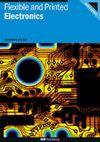可穿戴神经形态电子学的柔性和可拉伸突触装置
IF 3.2
4区 工程技术
Q3 MATERIALS SCIENCE, MULTIDISCIPLINARY
引用次数: 0
摘要
随着物联网的发展和健康监测需求的增加,可穿戴神经形态设备受到了人们的关注。它们通过生理信号处理,与人体无缝交互,提供有意义的信息,并与外界环境相互作用。这些器件的概念源于神经形态和柔性/可拉伸电子器件的发展,它们为传统刚性器件的局限性提供了解决方案。它们已被开发用于模拟突触功能和生物神经系统的灵活性/可拉伸性。在这项研究中,我们描述了在突触装置中应该实现的各种突触特性,以及在二端和三端装置中表现出这些特性的操作机制。此外,我们通过结构和材料工程,详细说明了在神经形态电子学中实现机械柔性和可拉伸性的综合方法。此外,我们还探索了这些设备的各种可穿戴应用,例如用于危险检测的可穿戴传感器,为感觉障碍者提供的辅助设备以及神经假肢设备。我们希望这篇综述能够提供对柔性和可拉伸神经形态设备的概念和趋势的全面理解,并有可能扩展到最先进的应用,如控制论和外骨骼。本文章由计算机程序翻译,如有差异,请以英文原文为准。
Flexible and stretchable synaptic devices for wearable neuromorphic electronics
Abstract Wearable neuromorphic devices have gained attention because of the growth in the Internet of Things and the increasing demand for health monitoring. They provide meaningful information and interact with the external environment through physiological signal processing and seamless interaction with the human body. The concept of these devices originated from the development of neuromorphic and flexible/stretchable electronics, which offer a solution to the limitation of conventional rigid devices. They have been developed to mimic synaptic functions and flexibility/stretchability of the biological nervous system. In this study, we described the various synaptic properties that should be implemented in synaptic devices and the operating mechanisms that exhibit these properties with respect to two- and three-terminal devices. Further, we specified comprehensive methods of implementing mechanical flexibility and stretchability in neuromorphic electronics through both structure and material engineering. In addition, we explored various wearable applications of these devices, such as wearable sensors for danger detection, auxiliary equipment for people with sensory disabilities, and neuroprosthetic devices. We expect this review to provide an overall understanding of concepts and trends for flexible and stretchable neuromorphic devices, with potential extensions to state-of-the-art applications such as cybernetics and exoskeleton.
求助全文
通过发布文献求助,成功后即可免费获取论文全文。
去求助
来源期刊

Flexible and Printed Electronics
MATERIALS SCIENCE, MULTIDISCIPLINARY-
CiteScore
4.80
自引率
9.70%
发文量
101
期刊介绍:
Flexible and Printed Electronics is a multidisciplinary journal publishing cutting edge research articles on electronics that can be either flexible, plastic, stretchable, conformable or printed. Research related to electronic materials, manufacturing techniques, components or systems which meets any one (or more) of the above criteria is suitable for publication in the journal. Subjects included in the journal range from flexible materials and printing techniques, design or modelling of electrical systems and components, advanced fabrication methods and bioelectronics, to the properties of devices and end user applications.
 求助内容:
求助内容: 应助结果提醒方式:
应助结果提醒方式:


